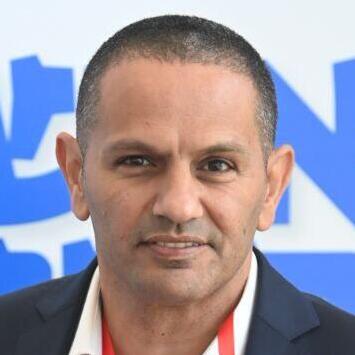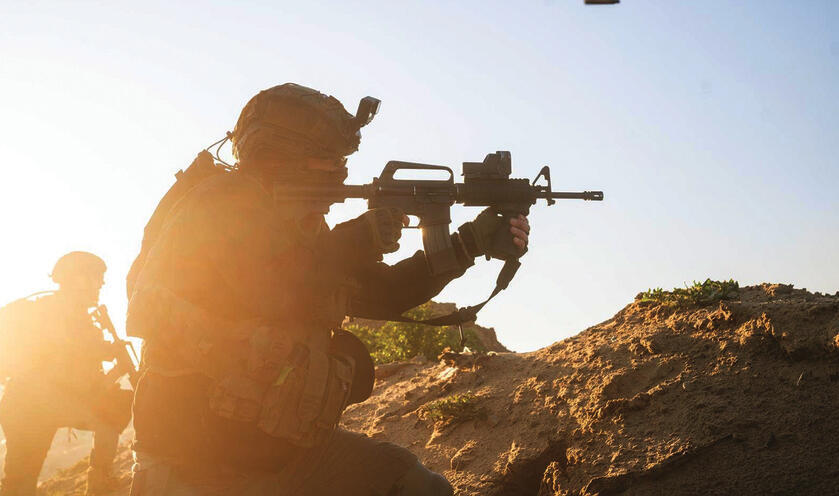Israel is juggling multiple fronts, but the question currently at the heart of Prime Minister Benjamin Netanyahu’s consultations is which one is the most urgent and critical. According to senior security officials, alongside the ongoing battle against Hamas rocket fire, Turkey’s threats in Syria, Hezbollah’s growing capabilities in Lebanon, and the Houthis’ missile attacks—there’s another name high on the list: Iran.
Meanwhile, U.S. President Donald Trump is escalating threats against the Iranian regime. Alongside increasingly sharp rhetoric, Trump announced that any attack launched from Yemen would be treated as if it originated from Iran itself—with all that implies. He also promised to maintain pressure on the Houthis, though that hasn’t stopped them from continuing their rocket fire toward Israel, disrupting daily life.
It’s still unclear whether these signals indicate an imminent military operation. But it doesn’t take a war strategist to notice the hints. The key question now is whether this is part of Trump’s negotiation tactics ahead of potential renewed talks on Iran’s nuclear program—or whether the region is on the verge of another dramatic escalation, possibly the most significant one yet. Just yesterday, Iran responded to the prospect of negotiations with the U.S., saying it would be open to talks through a third party.
On the ground, however, American activity is clearly ramping up. In recent days, at least five U.S. B-2 stealth bombers arrived at Diego Garcia, a remote island base in the Indian Ocean. The island is technically a British territory but is known to host a major American military presence; bombers from that base previously participated in operations in Afghanistan and Iraq. The flow of stealth bombers to the base is expected to continue, along with the arrival of transport and refueling aircraft.
Another sign of growing tension is the Pentagon’s recent decision to extend the deployment of the aircraft carrier USS Harry S. Truman in the Red Sea for another month and to send the USS Carl Vinson to the region as well. There also appears to be close coordination with Israel. The American THAAD defense systems were the ones that intercepted two ballistic missiles launched at Israel from Yemen.
The situation, however, is complex. Yesterday, The Wall Street Journal reported that the attack discussed in the White House’s now-exposed secret chat group—dubbed “Signal-Gate”—was based on sensitive intelligence provided by Israel. Israeli officials are reportedly concerned by this leak, both because of the exposure itself and because of repeated reports linking Israel to the strikes in Yemen.
Meanwhile, the IDF continues to operate in what it calls the “new normal”: a steady pace of attacks and friction across multiple fronts. In Syria, Israeli forces targeted weapons belonging to Assad’s army that had fallen into rebel hands—a strike that also served as a message to Turkey, which is eyeing the area. In Lebanon and Gaza, senior and mid-level figures from Hezbollah and Hamas were eliminated.
On the ground in Gaza, however, the renewed military operation is moving slowly. The strategy remains to pressure the local population into accepting the compromises proposed by the U.S. and Israel, rather than forcing a broader escalation to end the war. Recent anti-Hamas protests in the Strip generated significant interest, though it’s too soon to draw sweeping conclusions from them.
Get the Ynetnews app on your smartphone: Google Play: https://bit.ly/4eJ37pE | Apple App Store: https://bit.ly/3ZL7iNv
For now, it doesn’t appear that Israel is preparing for a large-scale ground offensive in Gaza. There are no immediate plans to deploy multiple divisions, and the current operation is measured and gradual. Israeli forces continue to gain ground without sustaining casualties, so despite the slow pace, the situation is relatively quiet. However, any promise of a decisive victory will require significantly more troops—and that means a large-scale call-up of reserve forces.
But given the current fatigue, growing political divisions, and, in particular, the continued exemption of ultra-Orthodox Israelis from military service, it’s doubtful anyone envies the IDF’s reserve liaison officers right now. That’s why it’s worth listening closely to what outgoing IDF spokesperson Brig. Gen. Daniel Hagari said yesterday as he handed over the post to Brig. Gen. Effie Defrin. Hagari called for “all segments of society to get under the stretcher,” adding, “We need more soldiers in the IDF right now—not in a few years. The war is happening now.”
Hagari has made his share of mistakes and became a lightning rod for criticism from the government, but on this point, he’s right.




